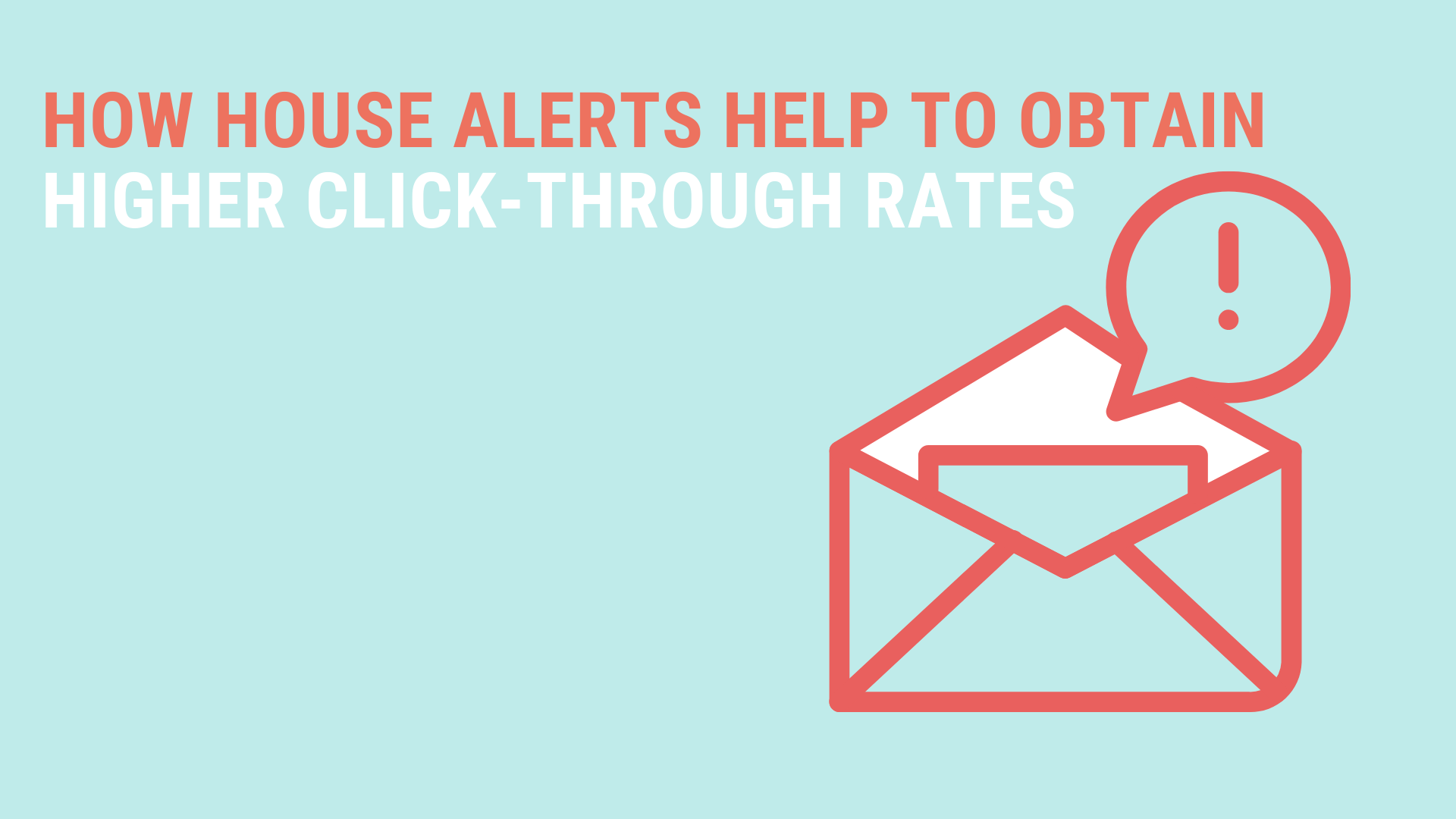You’ve Got Mail!
How House Alerts Help To Obtain Higher Click-Through Rates
August 25, 2021 | 3 min read

Buying a house isn’t like buying a bike, a new coat, or a snickers bar. While consumers are much more likely to take a chance on a lower cost item without doing extensive research, the same can’t be said in real estate.
For the vast majority of people, a house is the most expensive thing they will ever buy. And they’re not just buying the bricks, concrete, plaster, and wood. They’re buying a place they can make memories and call home.
This is precisely why potential buyers take a long time searching for their first or next home. They browse various websites, narrow down their options, and eventually select a real estate agency. Positioning yourself as the right real estate partner to facilitate this purchase can be a challenge. What if you acquire a customer’s dream house only days after they abandoned your website?
Thanks to house alert systems, you can quickly inform potential buyers when new properties that match their criteria show up. With the following three steps, you can re-target potential customers and help them find the house of their dreams.
Step one: collect their preferences
The first step in helping your customers find their perfect house is determining their purchase criteria (preferences). Many companies collect preferences by encouraging customers to create a profile and fill in a preferences questionnaire that clearly states what they are looking for.
While this method can be successful, it has significant drawbacks. For example, the process is often very time-consuming, which often puts many customers off. Preference forms often have low engagement, limiting their usefulness across the entire user base. A tool that requires users to engage actively is always going to leave many customers behind.
Luckily, this process can be simplified.
You can collect preferences by analyzing the visitor’s website behavior. For example, algorithms examine how long someone looks at specific properties and determines their taste by studying their search history. If the user only searches for apartments in densely populated areas, the algorithm knows they likely aren’t interested in a home in the countryside with lots of outdoor space.

This system has considerable benefits over a typical form-based preference system:
- It’s passive; users simply go about their normal browsing activities without being interrupted by a time-consuming task.
- It vastly reduces the time to apply and increases the relevancy of listings provided to the user.
The website knows exactly what the user is looking for, who they are, and can waste no time in sharing suitable properties.
It’s important to note that user preference forms can still be helpful to supplement user preference data. However, they are better used in conjunction with a passive preference collecting system rather than on their own.
All the data you collect must be linked to an individual user for the house alert to work. This leads us nicely to the next step: collecting email addresses.
Step two: collect email addresses
The second thing you have to do is to acquire the potential customers’ email addresses. This step doesn’t ask much from the customers, but it is crucial to complete the house alerts.
Implementing a pop-up is an excellent way to retrieve email addresses. A message like: “Haven’t found the house you were looking for? Don’t you worry! Leave your email address and we’ll find the house of your dreams.” can be incredibly persuasive. By contrast, “Leave your email address here.” is often off-putting and will turn the customer away. It’s too blunt and demanding and doesn’t spark any positive emotions.
An important thing to note is that with pop-ups, timing is everything. You don’t want to interrupt your users’ browsing experience at the wrong moment and risk annoying them. There are a lot of different options, but one very effective one is the exit intent pop-up. If the user starts to move their mouse to the X button in the corner of the browser, a pop-up message gets triggered.

Other alternatives to an exit pop-up could be:
- Pop-ups that are triggered by the time a visitor spends on a page.
- Entry pop-ups: A user sees a message when they first enter your site. This type of pop-up doesn’t waste any time in encouraging users to take action. However, they have to be used carefully. Asking users to share details before seeing what you have to offer could backfire.
- Scroll pop-ups: The message will get triggered when the visitor has scrolled down to a certain point on your website. This method can be very effective because users have already shown they are actively engaged with your website. However, you can risk interrupting the browsing experience.
Only asking for an email address will hold fewer people back from subscribing than demanding them to complete a long form. It’s much easier and takes no time at all.
Step three: provide house alerts
Once you have collected the customers’ preferences and email addresses, you can kick-start your final step: match the right properties with the right house hunters. This has a lot of benefits for both you and your potential buyers.
Firstly, it empowers you to re-engage lost customers. For example, a user may have completely forgotten about your website but find their way back after getting an alert. By showing the right properties, you become relevant and useful during their journey.
Another benefit of using preference algorithms is that they will automatically update whenever customers change their minds and search behavior. For example, suppose they started their search with properties in the city center but somewhere along the journey changed it to properties in the suburbs. In that case, the system will automatically update the alerts.

Worth remembering
Providing customers with tailor-made house alerts without demanding a lot of time will generate a higher click-through rate to your website. The key to succeeding is to remain relevant and exciting, offer convenience, and make sure you give them exactly what they want.
Personalizing the customers’ online journey will simplify the way they search for houses and allow real estate agencies to re-target customers with ease. And, of course, it also communicates that you care about helping them in their search for the perfect home.
Want to get more high-quality contact requests? Get our ebook now, learn how industry leaders and e-commerce are using data & personalization to gain more relevant leads.
Two Unique Dashboards That Will Help Your Real Estate Agents Close More Deals
Being successful in sales is about knowing your product inside out and knowing everything there is to know about your customer. Luckily, it’s easier to achieve these two goals today than ever before by using some unique dashboards. Read everything about it here:
How Artificial Intelligence is Shaping the Online Real Estate Market
Now in 2021, the message is clear; AI is here, and it’s here to stay. But what impact does this technology have on the real estate market? Read everything about it in this article
What Impact Did the Pandemic Have on Real Estate Websites?
What impact did the pandemic have on real estate websites? To answer this question, let’s take a look at the pandemic real estate trends:



